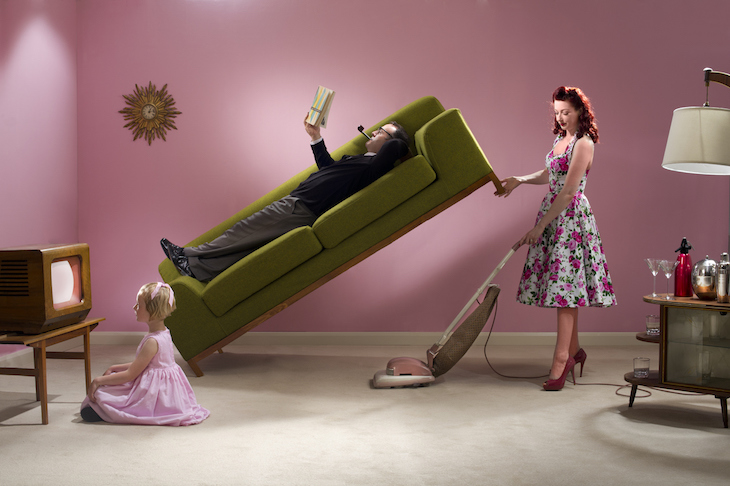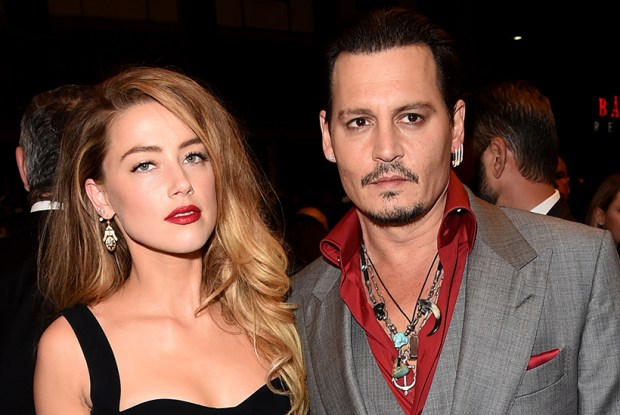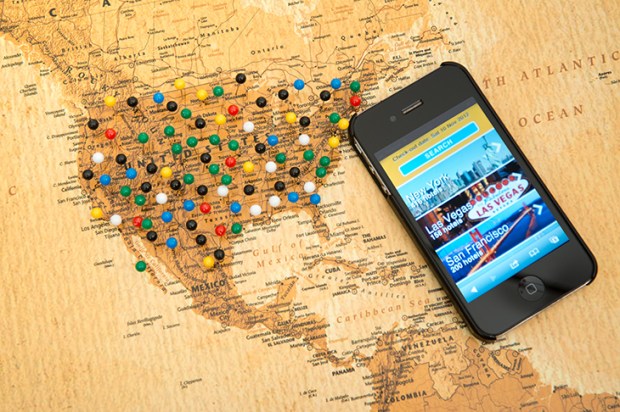Later this year, the Advertising Standards Authority will reveal to the world their list of rules designed to wipe out ‘gender stereotyping’ in TV ads. I’m already looking forward to it because the ASA’s first thoughts on the matter, published in July, were fascinating. An ad for baby milk which showed a girl growing up to be a ballerina was deemed quite unacceptable; KFC got flack for featuring one man teasing another for not being manly enough. Stereotypes on TV contribute to ‘unequal outcomes’ in reality, explained ASA’s chief exec.
Of course no one wants boys and girls to feel forced to conform — some boys are feminine, some girls boyish — but that wasn’t the issue here. What seems to trouble the ASA is that gender stereotypes exist at all. It sees them not as a caricature of the real differences between men and women but as a fiction, an embarrassing legacy of our misguided and misogynistic past.
The only sadness of that first review was that (after some weighing of the matter up) the ASA decided not to actually ban ads from depicting women at the sink. It’s irresistibly weird to imagine a Britain in which women slogging through the dishes are forced to watch a TV world in which only happy husbands do the washing up.
I had thought in July that perhaps the ASA was particularly po-faced and PC but over the past few weeks it’s become clear that their philosophy, the notion that all stereotypes are imposed with no basis in biology, has become fashionable again. The ASA episode was followed by the strange case of James Damore, sacked by Google for suggesting that men are better suited to computer engineering. And then, hot on Damore’s heels, has come a rush of pieces claiming that when left to their own devices, baby boys don’t prefer cars or football and that girls have no intrinsic liking for pink. A new book, Testosterone Rex, by the psychologist Cordelia Fine (author of Delusions of Gender: How Our Minds, Society, and Neurosexism Create Difference) aims to ‘slay the big, scaly body of assumptions, preconceptions, conjectures and distortions regarding ‘what men are like’ and ‘what women are like’.
I’d have more faith in science journalism if I didn’t remember quite clearly just a few years ago a fashion for articles saying the opposite. ‘There is increasing evidence of a biological basis for gender identity,’ said Science Daily. You can see quite plainly on scans, said Scientific American, that boys and girls have different connections between their frontal lobes. Do we need scientists to tell us that? Does it really make sense to imagine that though men and women look different physically, their brains are identical?
The idea that the male gender stereotype might be traumatic has found a keen audience among male celebrities. Robert Webb, a comedian who I’ve previously admired, gave a painfully irritating interview to the Sunday Times in which he claimed to have been oppressed in some non-specific way by macho working-class culture. A breath later he mentioned to the interviewer that in the early years of his marriage he’d left all household jobs and childcare to his wife.
There are fashionable ideas about gender, reflected back and forth across the media, and then there’s the great dark mirror of the internet which reflects the actual reality. If there’s no real difference between the sexes — if gender stereotypes are founded on myth — then why, when left to our own devices, do so many men and women freely conform to them? It’s ironic that Google’s so very right on, because it’s in our Googling that we reveal ourselves. Overwhelmingly it’s men who look at sex and sport. Overwhelmingly it’s women who swipe through gardening, cookery, childcare.
Perhaps you could say that the men and women of the 20th century have been irrevocably conditioned, our browsing habits moulded by the patriarchy. But what of teenagers, the girls and boys of the Snapchat generation? Never and nowhere have boys been more free to be girls and vice versa. But the way most teens behave on social media is a throwback to well before the sexual revolution.
Sales of make-up have tripled in recent years. A 21st-century girl spends just as much of her day applying make-up as did the most painted Victorian, and more time preening for the camera than any starlet. We think of wolf-whistling as outdated macho behaviour. Yet below the radar of most parents, an old-fashioned beauty pageant is under way every day on Instagram. The girls parade themselves, the boys ogle and comment as they’ve done for millennia. Teen girls on social media groom each other just as female chimps do. They compliment each other on their selfies back and forth: ‘Wow! You’re unreal! Gorg!’ ‘No you are!’ It’s a brave new gender–fluid world but even the unspoken rules of straight dating seem eerily retro. Girls don’t ask boys out; they just look pretty and wait.
This is not to say all girls and boys behave like this. The terrific thing about our day and age is that everyone feels much freer to be who they are. But in general, they freely behave according to stereotype.
Boys post pics of themselves getting smashed or scoring goals, and as far as I can tell from my young female cousins, they lobby girls ceaselessly for topless ‘pictures’ which they then save and share with their mates. How unreconstructed is that? Feminists thought they’d won a great battle getting rid of the Sun’s Page 3. They thought the old days of casual objectification were in the past. How much better was Page 3 than this casual trade in naked schoolgirls?
Cordelia Fine thinks we imagine the effects of testosterone. Snapchat and the porn industry says otherwise. The trouble for the ASA and for anyone who’s set their heart on eliminating gender is that evolution can’t be undone by right-on thinking. Unseen, unjudged, for fun, girls and boys behave in different ways.
Got something to add? Join the discussion and comment below.
Get 10 issues for just $10
Subscribe to The Spectator Australia today for the next 10 magazine issues, plus full online access, for just $10.
You might disagree with half of it, but you’ll enjoy reading all of it. Try your first month for free, then just $2 a week for the remainder of your first year.















Comments
Don't miss out
Join the conversation with other Spectator Australia readers. Subscribe to leave a comment.
SUBSCRIBEAlready a subscriber? Log in